This is an in-depth beginner’s guide to homemade French macarons. This post includes a kitchen-tested recipe, plus plenty of success tips, descriptions, overview of techniques, list of tools, and links to my favorite macaron resources and other recipes on the web.
Like many home bakers, I was a French macaron beginner a few years ago. These beautiful little cookies had always been a baking bucket list recipe for me. I started baking them after tasting the world famous Ladurée bakery macarons—talk about perfection! We originally published a French macaron recipe on my website in 2015. My homemade macarons weren’t nearly as flawless as the professional ones, but they worked for me at the time! However, the results weren’t always consistent. With 6 additional years of practice, I found a few small but very helpful improvements. Today’s recipe includes those updates.
A macaron is a meringue-based sandwich cookie made with almond flour, egg whites, confectioners’ sugar, and food coloring. Common fillings include buttercream, ganache, and fruit-based jam. The meringues have smooth tops, ruffled edges (called the “crown,” “foot,” or “pied”), and flat bottoms.

Macaroons Are Not Macarons
Macarons and macaroons are two completely different cookies. Macaroons have an extra O in the name and are coconut cookies. Macarons are delicate sandwich cookies. Here are my coconut macaroons. See the difference? Though they are both cookies made with egg whites, they are much different.
They are both, however, gluten free dessert recipes.
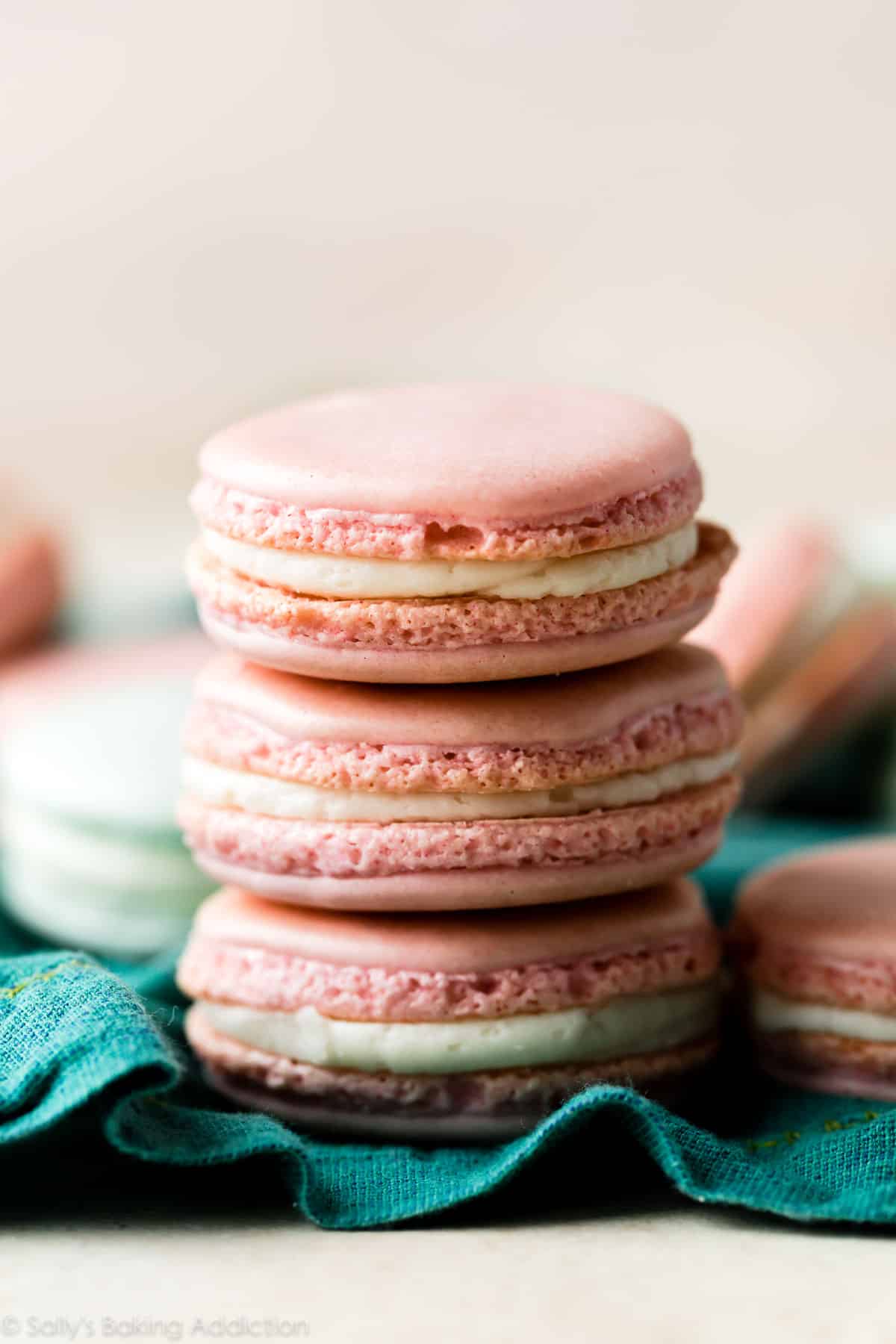
Step-By-Step Photos: How to Make French Macarons
Do your prep work. This includes (1) making superfine sugar with a food processor if you can’t find it at the store. I always make my own—see recipe note. Prep work also includes (2) wiping down the bowl you’ll whip the egg whites in with vinegar or lemon juice. Grease or fat prevents your meringue from setting up. And finally, (3) age your egg whites as described above and in the printable recipe below.
Making superfine sugar:
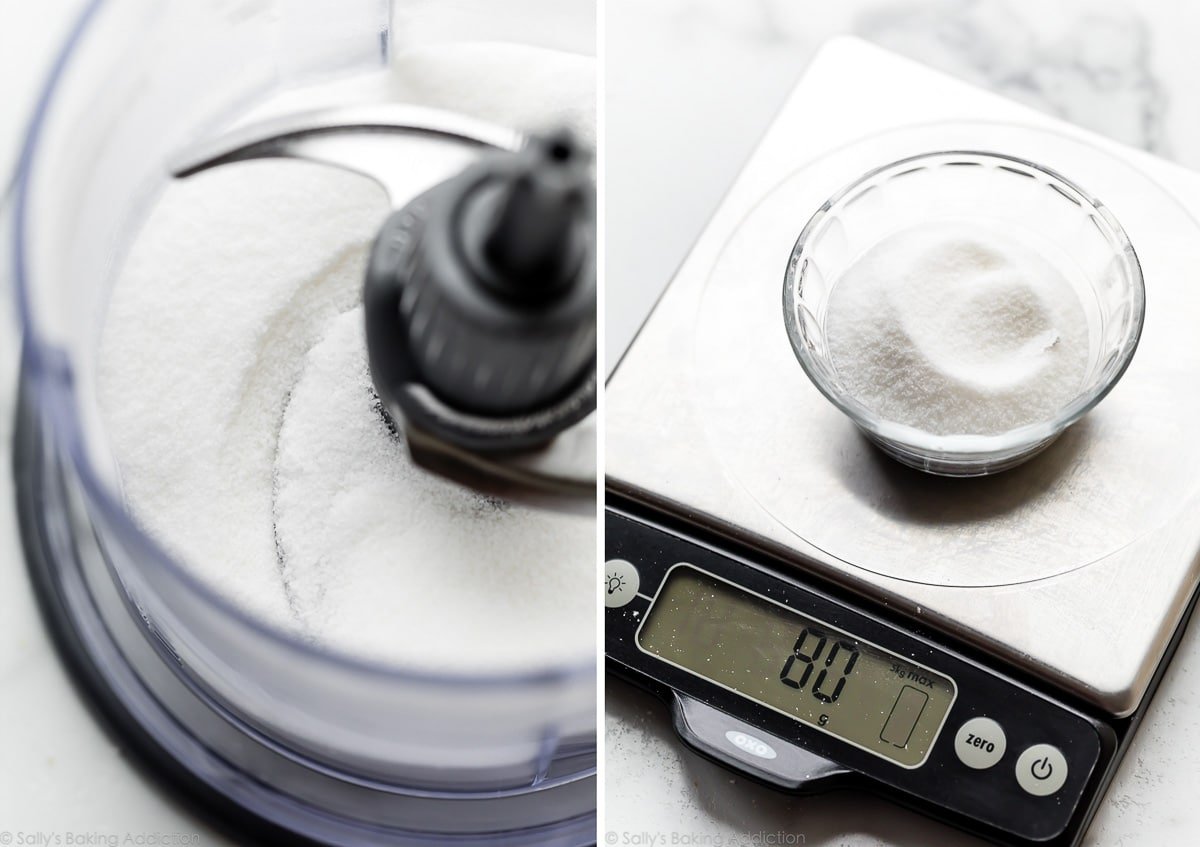
Zero out your scale, weigh your egg whites, cover, and refrigerate them for 24 hours. Bring to room temperature before using.
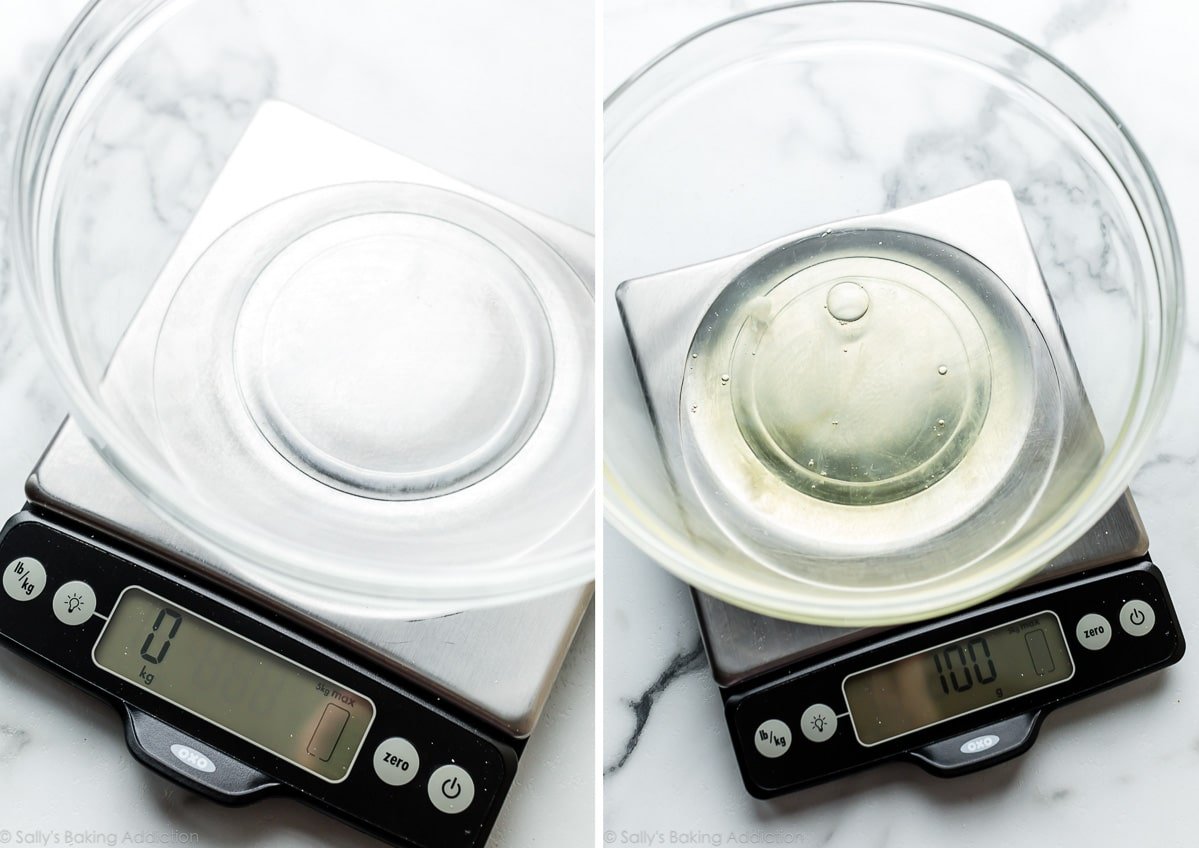
Now it’s time to start the macaron batter.
Add cream of tartar to your aged room temperature egg whites (below left) and beat until very soft peaks form. This takes a few minutes of beating. At first the egg white and cream of tartar mixture will be foamy, then the bubbles will begin to tighten and the beaters will leave tracks (below right) as the egg whites build volume:
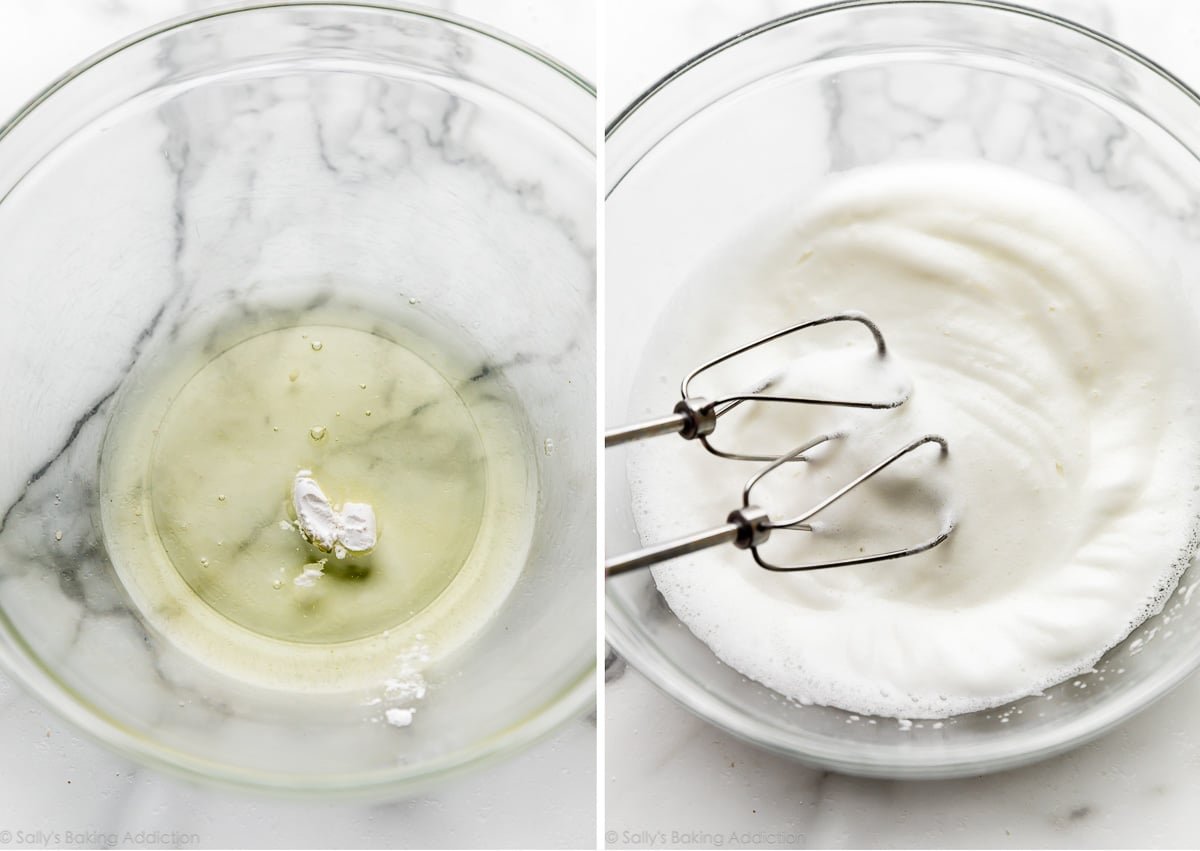
Now add your superfine sugar in 3 additions and beat until stiff glossy peaks form (below photos). What are stiff peaks? After several minutes of mixing in all the sugar, the egg whites will form stiff glossy peaks. This means the whites have stiff, smooth, and sharp points in the bowl or on the lifted whisk attachment/beaters. Stiff peaks do not droop down. You can literally turn the bowl upside down and the egg whites will not move or spill out. (You can watch me do that in the video tutorial.)
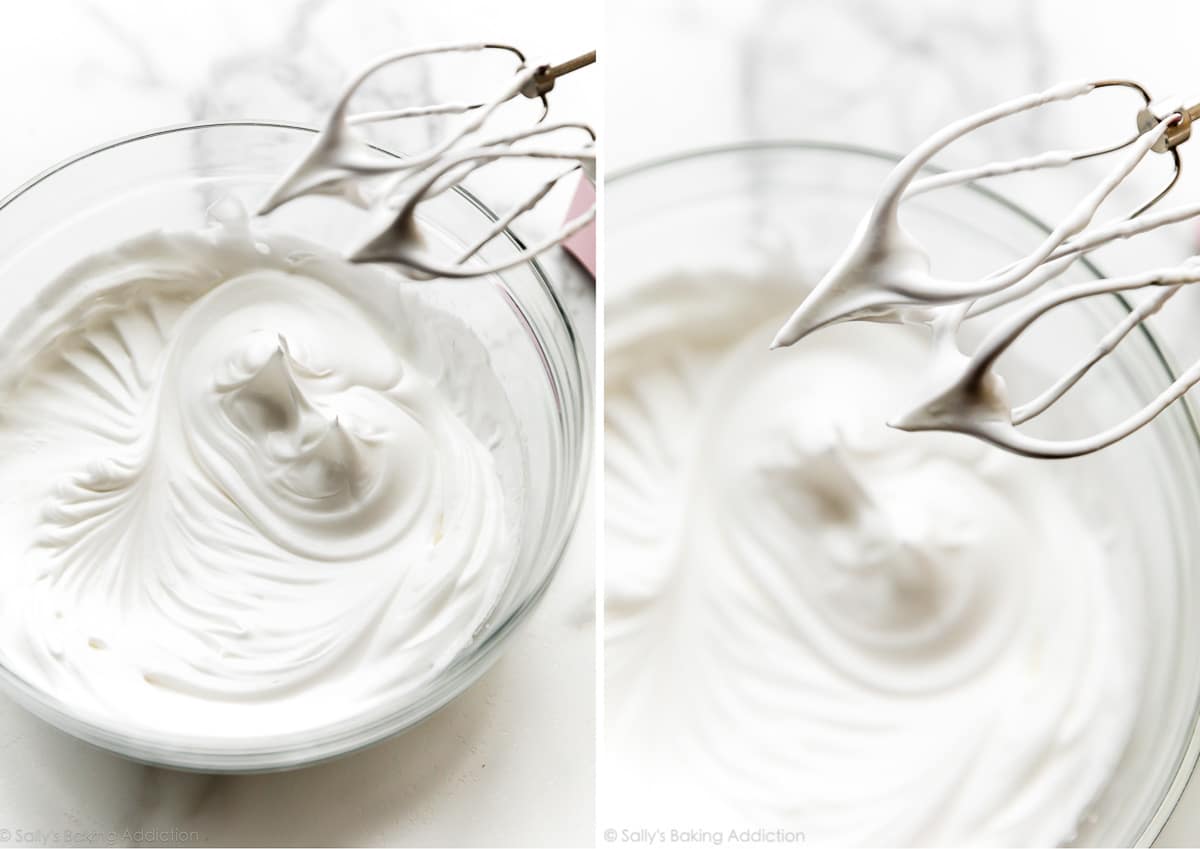
Now you can add your optional gel food coloring. It’s important to add gel food coloring to the egg whites directly, instead of the finished macaron batter. (Finished macaron batter more easily deflates.) Fold the coloring in very slowly. You can also beat in the food coloring with your mixer on a low speed.
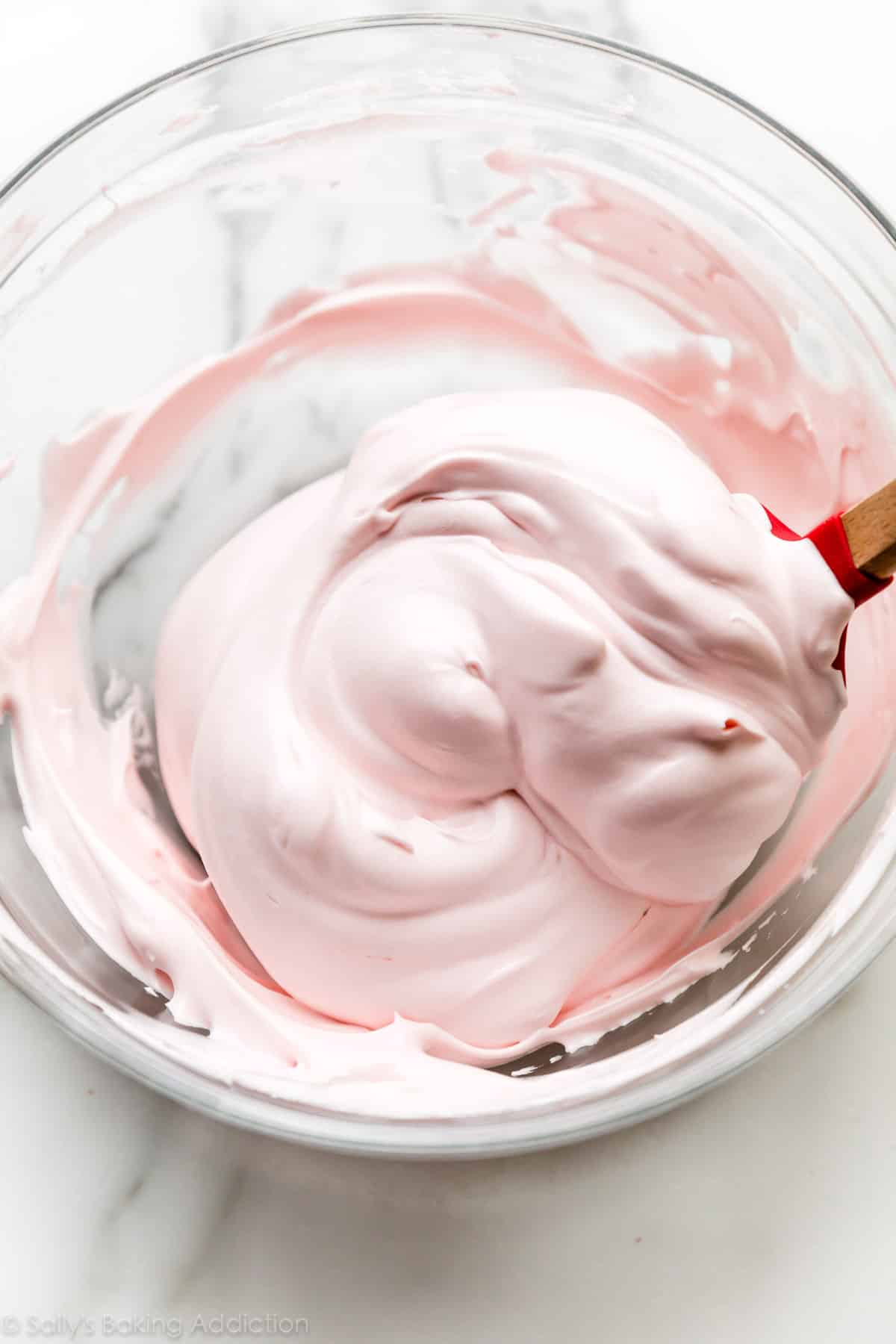
Set your stiff egg whites aside.
Sift the almond flour and confectioners’ sugar together in a large bowl. The bigger the bowl, the more room you have for the macaron batter, and the easier it will be to manage. Use a spoon to help work any larger pieces through the sieve. You don’t want to discard a lot of that because then you won’t have enough dry ingredients in the batter.
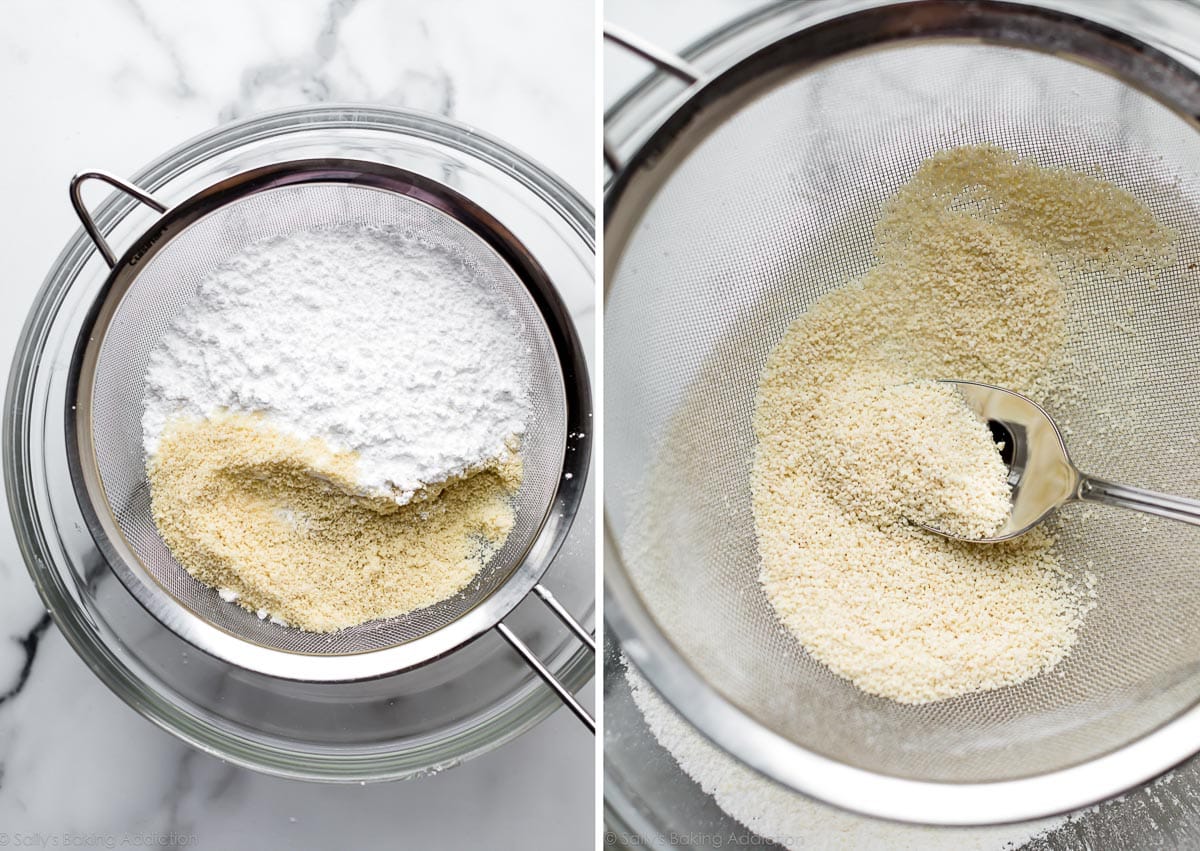
Sifting guarantees a nice light texture.
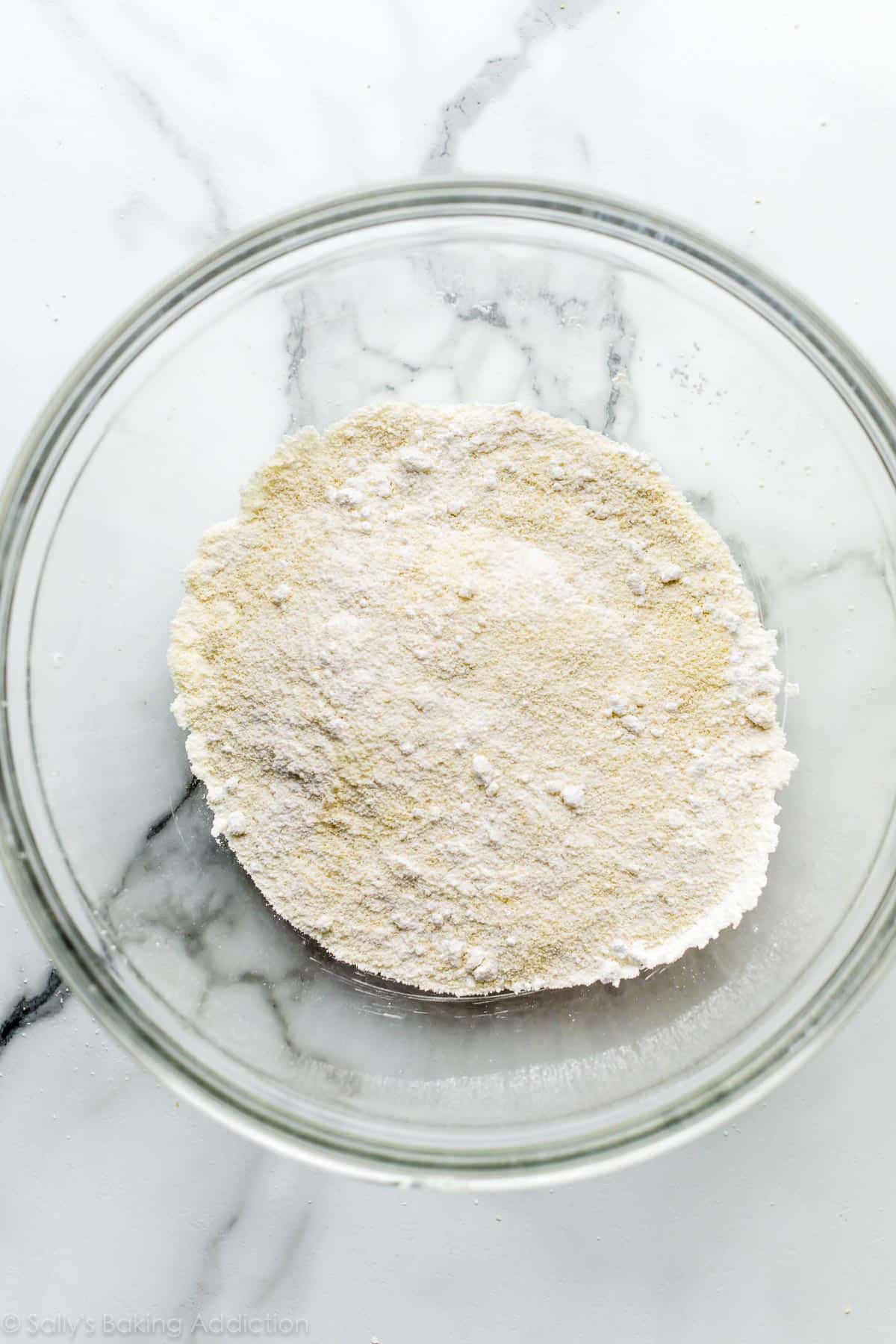
In 3 separate additions, begin slowly folding in the beaten egg whites in a circular motion. I always eyeball the amount. (Tip: The amount of egg whites you add at a time doesn’t have to be perfect because what you’re really looking for is the consistency of batter after the 3rd addition, known as macaronage and explained below.)
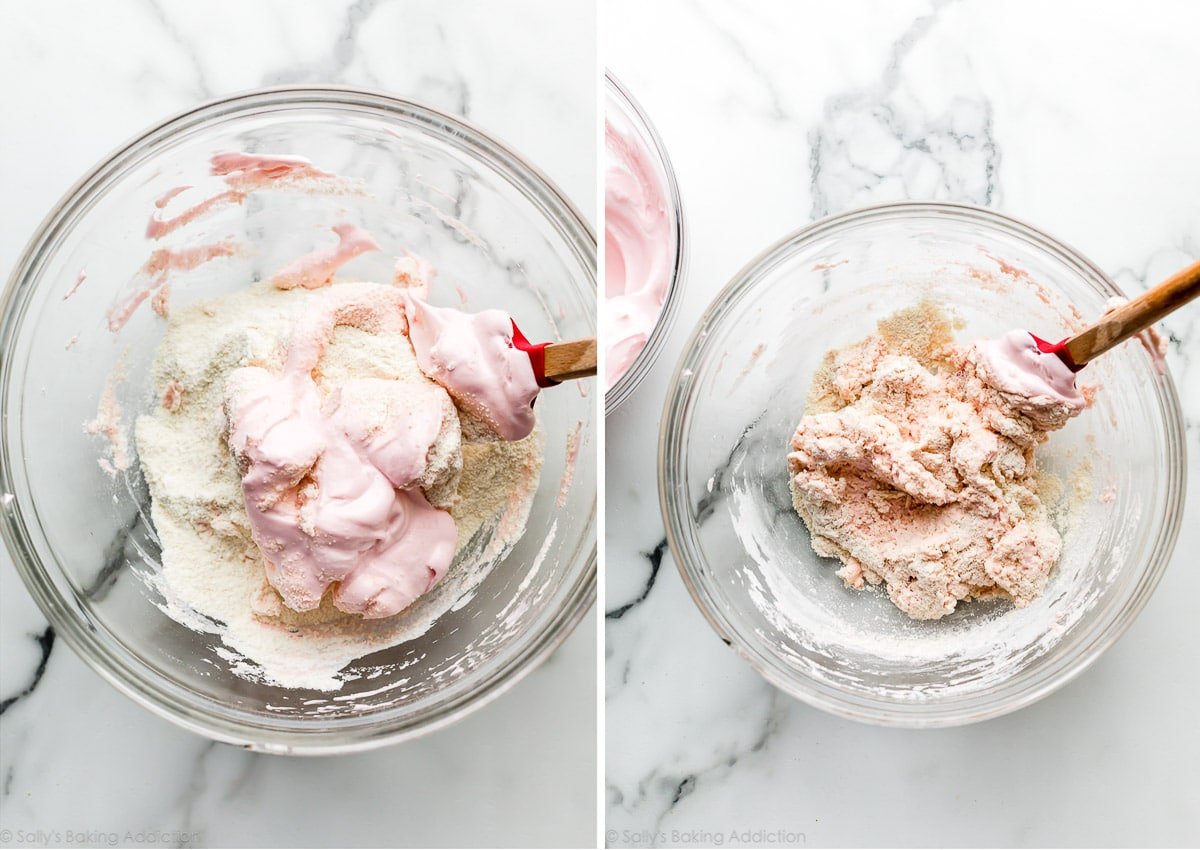
After only 1 addition, the batter will be very thick and dry:
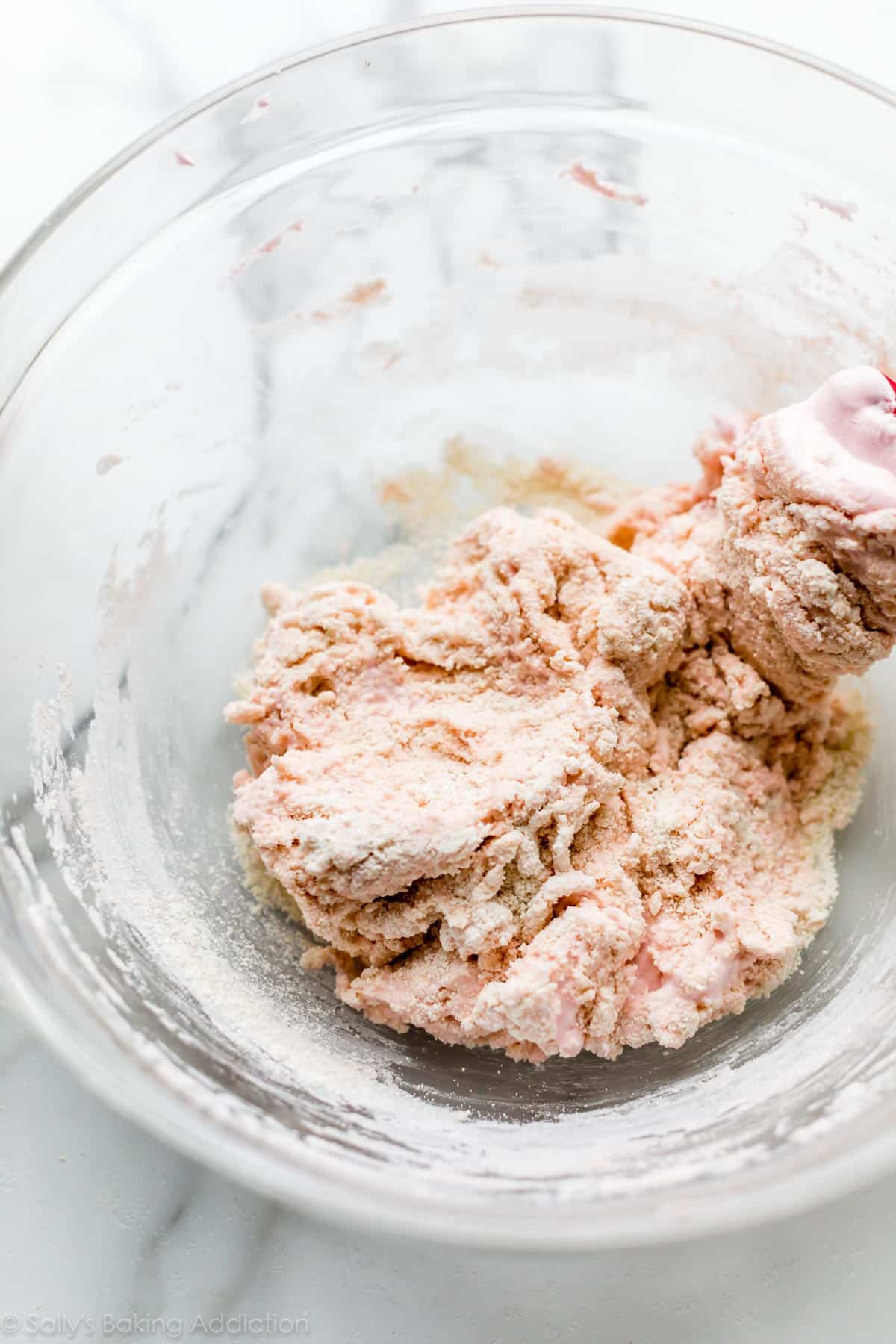
The batter will begin to loosen up after you add the 2nd and 3rd addition:

After that 3rd addition of egg whites, you’re at the macaronage stage. You need to keep folding and deflating air until you reach the perfect consistency.
Macaronage is the process of working macaron batter into a shiny and flowy consistency that easily pipes into smooth macaron shells. You may have heard this term before and rightfully so—it’s a crucial step in this macaron recipe. During this stage, you want to be sure not to overmix or undermix the batter. Undermixed and thick batter can produce lumpy or hollow macarons. Overmixed and thin batter can produce cracked macarons or macarons without feet.
Balanced macaron batter after achieving that perfect macaronage is best understood through visuals. Use my video above as a guide starting at the 3:10 minute mark. The photo below should be helpful as well. Drop the macaron batter off of your spatula in the form of a figure 8. The batter will stream off of your spatula like honey and the figure 8 should take no more than 10 seconds to sink back into itself. If it takes less, your batter was overmixed and is too thin. If it takes longer, continue slowly folding the batter to deflate more air.
It’s best to go very slow so you don’t accidentally overmix.
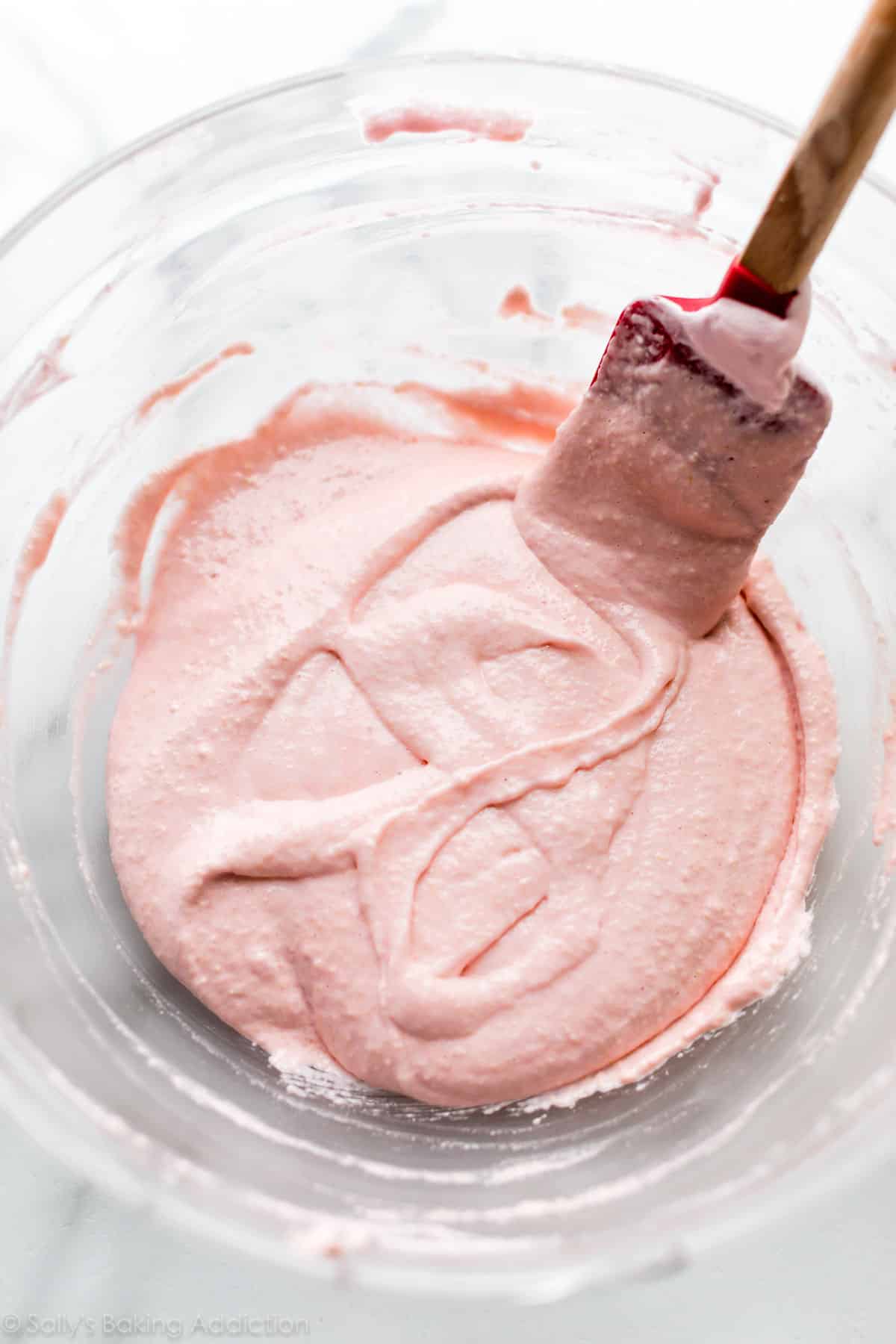
Spoon the macaron batter into your piping bag fitted with your piping tip.
French Macaron Recipe | ALL the Tips and Tricks!
FAQ
What is the best way to describe a macaron?
What are macaroons descriptions?
What are the characteristics of a macaron?
What do French macarons taste like?
